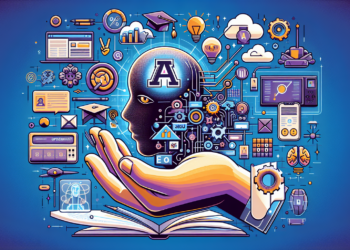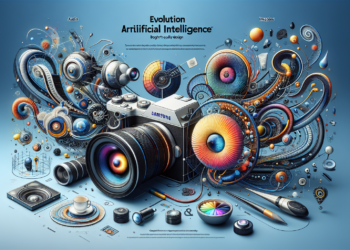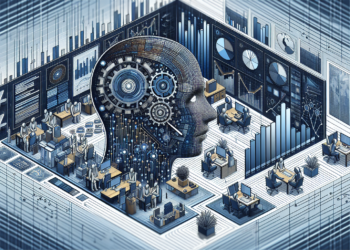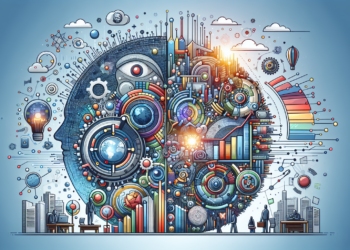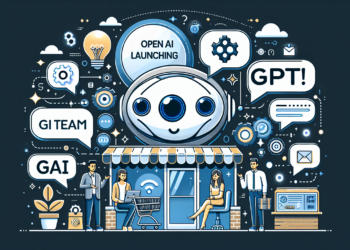Artificial Intelligence (AI), historically driven by humanity’s ambition to replicate its own cognition, has raced from philosophical realms to practical applications with dizzying speed. The exploration of its complexity lies between algorithmic design and the relentless pursuit of useful generalizations from massive datasets. This article aims to unravel the “black box” of AI, examining the intricate web of theories and breakthroughs that form its core and how these are reflected in concrete applications.
Swarms of Models and Methods
Contemporary AI is indivisible from machine learning algorithms and, more specifically, deep learning. Artificial Neural Networks (ANNs), genetic algorithms, and fuzzy logic systems constitute the cutting edge of algorithm design. ANNs, inspired by biological brain structures, dazzle with their multiple layers that encapsulate the ability to identify latent patterns in data. Activation functions like the ReLU (Rectified Linear Unit) and its variants catalyze the necessary non-linearity to model complexities of the real world.
Optimization and Loss Functions
AI optimization seeks the minimization of loss functions, mirrors of inaccuracies in data prediction or classification. Algorithms such as stochastic gradient descent and its evolutions, like Adam or RMSprop, refine the search for global minima in high-dimensional landscapes characteristic of complex model parameter spaces.
The choice of loss function is equally vital; cross-entropy for classification problems or mean squared error for regressions continue to dominate, but innovations such as contrastive loss and triplet loss are gaining traction in fields like representation learning and computer vision.
Regularization and Generalization
A crucial aspect of any AI model is its ability to generalize from the training set to unseen data. Regularization takes forms such as ‘dropout,’ where random neurons are temporarily “switched off” to prevent excessive co-dependence among them and mitigate overfitting. Other techniques like batch normalization stabilize learning dynamics and accelerate convergence.
Transformers and Attention
Transformer models have reshaped the understanding of sequential tasks, claiming notable successes in NLP (Natural Language Processing). These models capitalize on the ability of attention to weigh informative components of a sequence, allowing learning to focus on relevant relationships without the constraints of a recurrent or convolutional structure.
Advancements and Generative Networks
Generative Adversarial Networks (GANs) symbolize the duality in AI; two networks, the generative and the discriminative, compete in a zero-sum game that perfects one’s generative capacity and the other’s detection abilities. They have catalyzed advances in the creation of synthetic images and textures, as well as in language processing for text generation.
Emerging Applications and Use Cases
In the clinical field, AI has shown potential in image-assisted diagnosis, detecting subtle patterns in images that presage medical anomalies. Here, models like CNNs (Convolutional Neural Networks) integrate the hierarchical learning of visual features that often surpass human diagnostic effectiveness. Another emerging application is in autonomous robotics, where AI endows robots with the ability to navigate and manipulate their environment with increasing finesse.
Ethical Challenges and Future Directions
Transparency in AI demands the interpretability of models, which confronts the esoteric intricacies of deep networks. “eXplainable AI” (XAI) techniques seek to reveal the underpinnings of AI decisions. For instance, LIME (Local Interpretable Model-Agnostic Explanations) helps understand predictions by identifying contributions of specific features at a local level.
Looking ahead, the ubiquity of AI in critical systems requires robustness against adversarial examples that seek to deceive predictions. Proactive defense through adversarial training aims to immunize networks against such manipulations.
Conclusion: A More Translucent Box
Unraveling the “black box” of AI involves the constant revision and evolution of its principles and methodologies. Examining the state of the art is not merely academic but a cornerstone for responsible and ethical applications. The future promises more interpretable models and algorithms that approach the proverbial general AI, with the caution of balancing predictive power with operational clarity.
AI remains in a state of perpetual metamorphosis, challenging the boundaries of science and ethics, driving researchers to devise solutions as innovative as the emerging problems. Delving into these facets offers a privileged view of the magnitudes and directions in which this field, central to humanity’s technological saga, expands its horizons.


